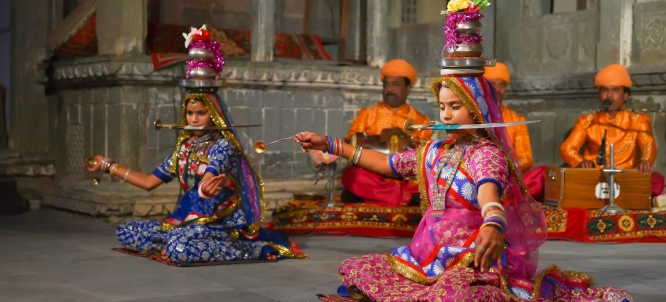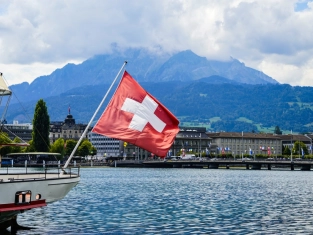by PushtoLearn
Which Languages Are Spoken In India?
Table of Contents
The 22 Official Languages of India
The Indian Constitution recognizes 22 official languages, meaning they can be used in government, education, and administration at the state level.
|
Language |
Region Where Spoken |
Language Family |
|
Assamese |
Assam |
Indo-Aryan |
|
Bengali |
West Bengal, Tripura |
Indo-Aryan |
|
Bodo |
Assam |
Tibeto-Burman |
|
Dogri |
Jammu & Kashmir |
Indo-Aryan |
|
Gujarati |
Gujarat |
Indo-Aryan |
|
Hindi |
North & Central India |
Indo-Aryan |
|
Kannada |
Karnataka |
Dravidian |
|
Kashmiri |
Jammu & Kashmir |
Indo-Aryan |
|
Konkani |
Goa, Maharashtra |
Indo-Aryan |
|
Maithili |
Bihar |
Indo-Aryan |
|
Malayalam |
Kerala |
Dravidian |
|
Manipuri (Meitei) |
Manipur |
Tibeto-Burman |
|
Marathi |
Maharashtra |
Indo-Aryan |
|
Nepali |
Sikkim, Northeast |
Indo-Aryan |
|
Odia |
Odisha |
Indo-Aryan |
|
Punjabi |
Punjab |
Indo-Aryan |
|
Sanskrit |
Ancient language, limited speakers |
Indo-Aryan |
|
Santali |
Jharkhand, West Bengal |
Austroasiatic |
|
Sindhi |
Diaspora in India & Pakistan |
Indo-Aryan |
|
Tamil |
Tamil Nadu, Puducherry |
Dravidian |
|
Telugu |
Andhra Pradesh, Telangana |
Dravidian |
|
Urdu |
Uttar Pradesh, Bihar, Jammu & Kashmir |
Indo-Aryan |
Fun fact: Tamil and Sanskrit are the only two classical languages of India due to their ancient origins and literary history.
Language Families in India
India’s languages fall into four major language families:
|
Language Family |
Examples |
Where Spoken |
|
Indo-Aryan (75% of Indians) |
Hindi, Bengali, Punjabi, Marathi, Gujarati, Urdu |
North, Central & East India |
|
Dravidian (20% of Indians) |
Tamil, Telugu, Kannada, Malayalam |
South India |
|
Tibeto-Burman |
Manipuri, Bodo |
Northeast India |
|
Austroasiatic |
Santali, Khasi |
Tribal regions of Eastern & Central India |
Most North Indian languages (like Hindi, Bengali, and Punjabi) come from Indo-Aryan roots, while South Indian languages (like Tamil, Telugu, and Kannada) come from Dravidian roots.

Hindi – The Most Spoken Language in India 🇮🇳
-
Spoken by: ~425 million native speakers, ~120 million second-language speakers.
-
Where? Mainly in North & Central India (Hindi Belt):
-
Uttar Pradesh, Bihar, Madhya Pradesh, Rajasthan, Haryana, Delhi, Himachal Pradesh, Jharkhand, Chhattisgarh, Uttarakhand.
-
How similar is Hindi to Urdu?
-
Grammar and vocabulary are very similar.
-
Hindi uses Devanagari script, while Urdu uses the Perso-Arabic script.
✅ If you visit North India, learning basic Hindi phrases will be helpful!
English – The Language of Business & Education
-
Spoken by: ~10% of Indians (~125 million people), mostly as a second language.
-
Why is English important in India?
-
A legacy of British colonial rule.
-
Used as a working language in government, business, and education.
-
Helps Indians connect in global industries like IT, finance, and customer service.
Indian English (Hinglish) blends English with Indian languages. For example:
-
"What is your good name?" (polite way to ask someone’s name).
-
"Timepass" (something done to pass time).
✅ You can get by with English in major cities like Mumbai, Delhi, and Bangalore, but rural areas may require local language skills.
The ‘Hindi Belt’ vs. Regional Languages
-
Northern & Central India → Hindi is dominant.
-
Southern India (Tamil Nadu, Karnataka, Kerala, Andhra Pradesh, Telangana) → Dravidian languages dominate, and Hindi is less commonly spoken.
-
Northeast India → A mix of Tibeto-Burman languages.
💡 Important: Not everyone in India speaks Hindi! In states like Tamil Nadu and West Bengal, Hindi is not widely used—locals prefer their regional languages.
Do Indians Speak Multiple Languages? 🌍
Yes! Many Indians are bilingual or trilingual due to:
✅ Bilingual education – Schools teach students their mother tongue + Hindi or English.
✅ Cultural exposure – Bollywood films, music, and TV often mix Hindi & English.
✅ Interstate migration – Many Indians move for work and pick up local languages.
For example, an Indian from Bangalore might speak:
-
Kannada (native language)
-
English (work & education)
-
Hindi (general communication)
Can You Get By with English in India?
✅ In major cities like Delhi, Mumbai, Bangalore, and Chennai – English is widely spoken.
✅ In government offices, hotels, and airports – English is commonly used.
❌ In rural areas – English may not be understood, so knowing basic Hindi or the local language helps.
🚨 Tip: Learning a few phrases in Hindi or a regional language will impress locals and make travel smoother!
FAQs 🤔
What is the national language of India?
India does not have a national language, but Hindi and English are the official working languages of the central government.
What is the most spoken language in India?
Hindi is the most spoken language (~425 million native speakers), followed by Bengali, Marathi, and Telugu.
Do all Indians speak Hindi?
No! While Hindi is common in North & Central India, many states prefer their regional languages over Hindi.
Is English widely spoken in India?
Yes! English is used in business, government, and education, but it’s not a first language for most Indians.
What languages should I learn for traveling in India?
-
Hindi (for North India).
-
Tamil, Telugu, or Kannada (for South India).
-
Bengali, Marathi, or Punjabi (for specific regions).
-
English (for major cities and tourism).

